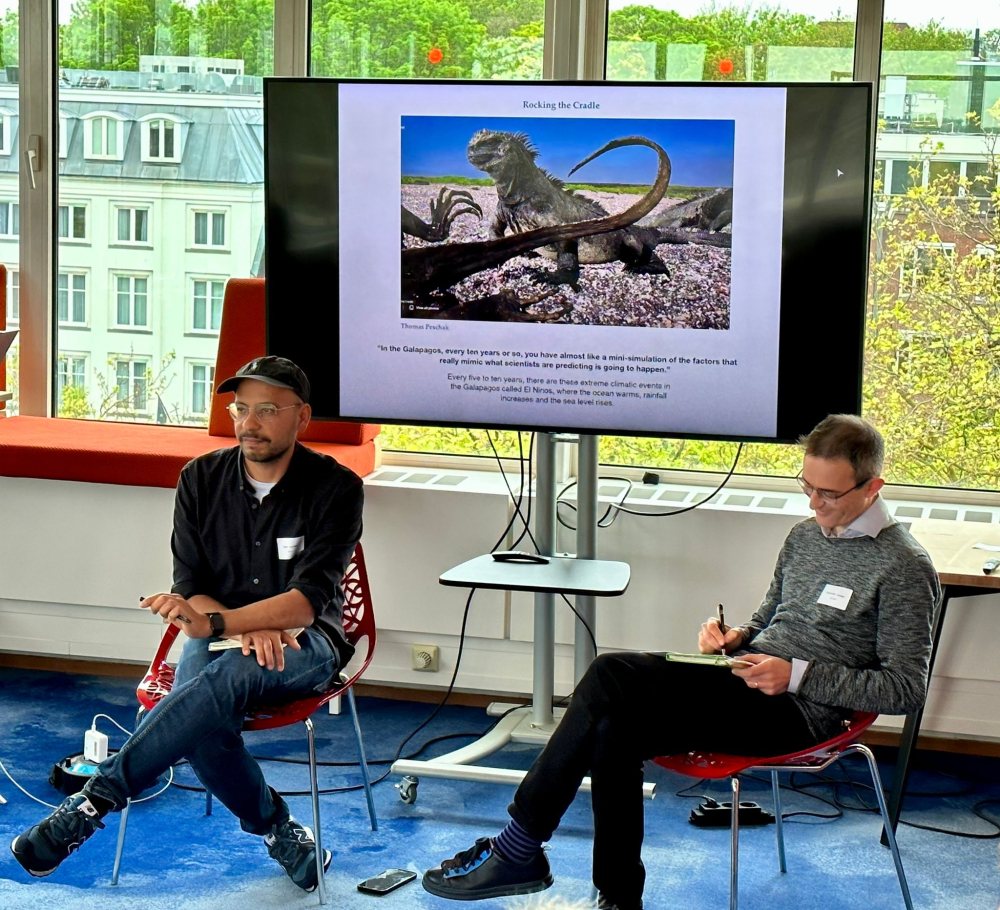News
31 May 2023Using storytelling tools to bridge the gap between science and art
On 10 May, NWP held an inspiring session where researchers and communications experts from various research institutes got together on the topic of storytelling and science. During the session, the organisations got to know each other better, familiarised themselves with the NWP network and were reminded of the benefits their membership brings.
This get-together once again proved the value of connecting to one another, networking, and exchanging challenges and experiences. During the meeting, guest speakers Emanuele Fantini, Senior Lecturer and Researcher in Water Politics and Communication at IHE Delft, and Roger Anis, Documentary photographer and artistic director for #EverydayNile Project, presented their experiences in visual storytelling and research in the #EverydayNile Project. Afterwards, there was room for questions, 1-1 interaction and sharing experiences.
Emotion is the key element
Many researchers who communicate their work on global environmental issues wonder how to encourage people to take action. The #EverydayNile Project authors believe that emotion is the key element to be included in communicating water issues to encourage people to respond to environmental challenges. Visual storytelling is a tool that can combine emotions and knowledge.
According to Emanuele Fantini, science and art, which help us express emotions, do not need to be entirely separated. Instead, scientific research can start by asking about emotions and norms. One way to do this is to ask why we consider something important? Researchers suggest that we need to link our scientific data to stories and to the right emotions better, and then turn it into action.
Watching stories with others
Visual storytelling presented in the form of an exhibition or presentation for a diverse audience can increase your impact. “Thanks to #EverydayNile regional and local photo-exhibitions we have learnt the power of collective consumption,” says Emanuele Fantini. He recognises that most people experience photography and stories on laptops or smartphones in their own personal way. Although these stories are powerful, the emotions tend to reinforce the perspectives they and their close environment already hold. “People easily end up thinking that their perspective is the only exciting story in town. You can gain more knowledge and change your perspective only if you share stories with others,” suggests Fantini.

Images are often used to legitimise uneven distribution of power or gender relations and imbalances. The #EverydayNile Project challenges mainstream representations of the river and its waters.
Emanuele Fantini
Senior Lecturer and Researcher in Water Politics and Communication at IHE Delft
What visuals can bring to your research
These days, taking photos is a commonplace and quite accessible practice for everyone. According to photojournalist Roger Anis, photographs bolster what communication experts and researchers want to share with their audience, stimulate discussion, or highlight important events or discovery in society. He sees that scientists forecast events such as climate change impacts, whereas artists capture them. Combining the strengths of artists and researchers could make it easier to encourage people to act. “Photography is the technical medium used to tell the story, but at the end of the day it is about the knowledge of the story,” acknowledges Roger Anis.

This is the beauty of art, journalism, photos, visuals. You see their value when people tell you they learned something new that you brought to them. You create something new for people
Roger Anis
Documentary photographer
NWP is looking forward to continuing the dialogue on this topic and following the work of the organisations that were present. NWP is here to help you create visibility for your projects and research, to represent you at events, help you make connections in the water sector, and share relevant news with you.
*Cover photo by Roger Anis.
Featured NWP members: IHE Delft
